The first day of harvesting was a true eye opener for me. Being in the field is something that can only be experienced, not read about. I think one of the most important things I learned during that day was that all parts of a vineyard are not created equally. Aside from my back hurting and my feet and legs being sore, I was able to notice (in flying colors) that grape quality varied from row to row, top to bottom, and side to side. Of course I have read about this in books, but seeing it with my own eyes made it come to life.
“What could cause this variation?”, I asked to myself. In my head I decided to go over all the factors that could have contributed to the this: steepness of slope, soil composition, exposure and vine type all came to mind. Just in one vineyard alone, all of these factors showed their faces. For example, when we began to harvest Cabernet Sauvignon. Cabernet is a grape that prefers gravely and well drained soils. At the top of the this particular slope existed the healthiest grapes for two reasons. One, the soil here had a high proportion of rock and gravel. Two, the hill was steeper at the top then at the bottom. As I made my way down the hill I noticed that soil was beginning to turn more clay-like and the steepness also had decreased as well. Water from the top of the hill would trickle down into flatter clayey soils of the bottom and in effect hamper the quality of grapes.
The same principles can also be applied to the Sangiovese grape. The steeper hills high in composition of a soil type called galestro, produced better grapes.
The Merlot was a little different story. This grape prefers more clayey soils, so where there was a higher percentage of rock and gravel, the Merlot was not at 100%.
Of course there are other factors that play a role in determining grape quality, but I was able to feel the effects of soil composition the most. Sometimes there is just no good explanation of why some vines do better than others.
Here are some pictures of a particular row of vines. You will be able to see the variation from vine to vine
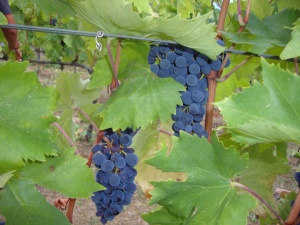
1: Decent quality bunches, can be a little tighter
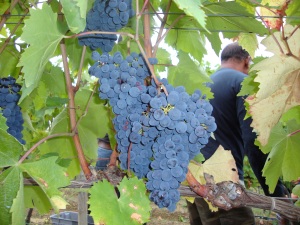
2: Fuller and larger
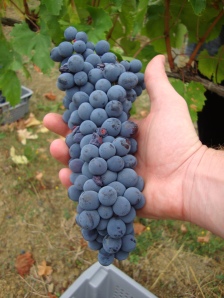
3: Pretty much perfect
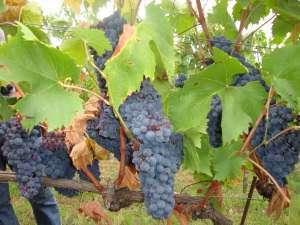
4: More clusters here, but there is some rot and dry spots
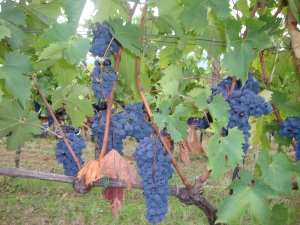
5: Really nice bunches
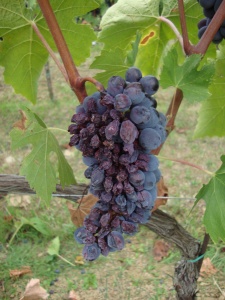
6: About half of this cluster was dried out
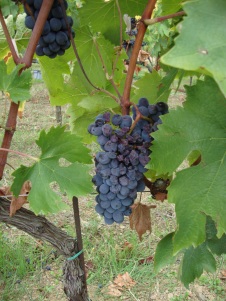
7: A little more dryness
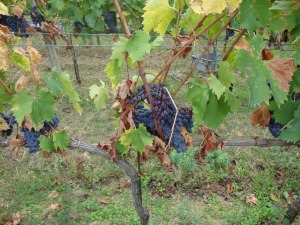
8: Not looking so hot...
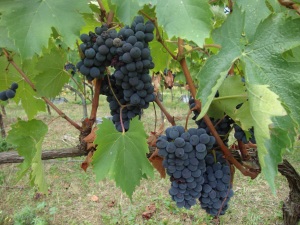
9: Getting better
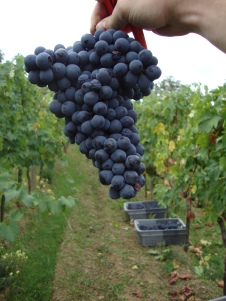
10: Now that's sexy!
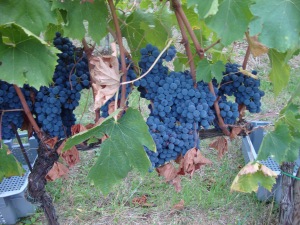
11: More nice bunches, but not as compact
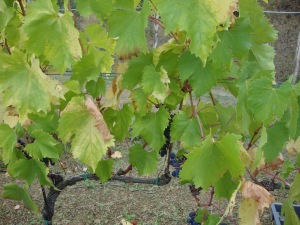
12: Hard to tell, but quantity and quality are diminishing
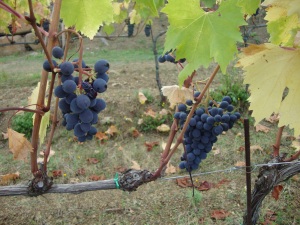
13: Loose, small and low quality
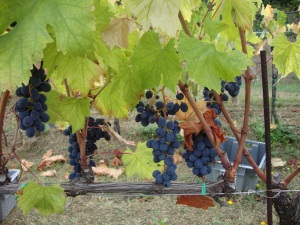
14: More low quality


Vineyard Variation: Part 2 « The Ride Inside Said:
on October 18, 2009 at 7:07 pm
[…] of selection is sometimes done in the vineyard or before blending. If you read the first post on vineyard variation you will see that not all grapes are created equal. During the harvest the selection of the best […]